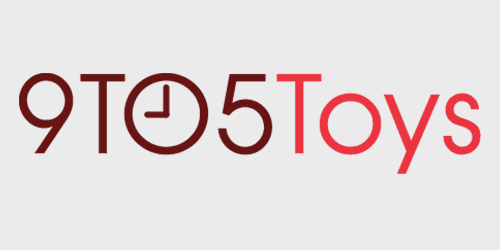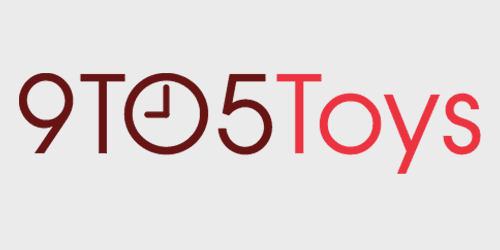
Recently I endeavored to create an overhead camera rig for unboxings, reviews, and everything in between. I’ve been wanting a rig like this for years, but only now decided to follow through with its creation.
I’m extremely satisfied with the end result, which allows for easy top down photos and videos, and has the flexibility to fit inside a small office or bedroom. The rig also works as a truss to mount additional cameras, lights, flags, microphones, and whatever else you need. Watch our hands-on video for a brief walkthrough that shows how to make a DIY overhead camera rig yourself.
What’s needed?
To replicate my rig, you’ll need the following items. Just remember that this is just a guide, feel free to modify it to fit your specific needs and shooting environment.
The basics
These are the bare minimum items that you’ll need to create a basic overhead rig like mine.
- 2 x Impact Turtle Base C-Stand Kits
- 2 x sandbags
- Gamut 304 Stainless Steel 6-foot 5/8-inch rod
- Manfrotto 014-14 Rapid Adapter – 5/8″ Stud to 1/4-20″
- Manfrotto 577 Rapid Connect Adapter

Everything else
- Additional Manfrotto 014-14 Rapid Adapter – 5/8″ Stud to 1/4-20″
- Matthews 24×36″ Flag
- Camvate 11″ Articulating Magic Arm for Camera Monitor
- Impact Super Clamp with Ratchet Handle
- Neewer 160 LED CN-160
- Bestview S7 4K camera HDMI HD monitor
- Sony A7 III with 28-70 f/3.5-5.6 kit lens
- Uplift desk 36 x 30 standing desk
- Luxli Timpani RGB/AW 1×1 Light
Obviously, the camera, lens, desk, monitor, etc. are all optional features. It’s likely that you already own some of these items, but I wanted to provide a 1:1 representation of my setup.
Excluded from this tutorial are lights, backdrops, etc. Feel free to modify this however necessary to meet your needs.
In the following video walkthrough, I showcase the overhead rig and explain my decision-making through the process.
Video walkthrough
Subscribe to 9to5Toys on YouTube for more
How to set up a simple overhead camera rig
The rig itself is very simple, and anyone can easily make this with a little bit of time and money. The foundation of the rig are two C-stands with grip heads on top. The Impact Turtle Base C-Stand Kits come with everything you need, plus extra 40-inch grip arms, which are useful for adding flags or other accessories to the setup. You’ll want to be sure that you use sandbags on each of the C-stands for safety.

The next crucial piece of the overhead rig is the 6-foot 5/8-inch rod that attaches to the two C-stands via the grip-heads. I found the perfect 6-foot 5/8-inch rod from Gamut, a subsidiary of Grainger, and it only cost around $20 shipped.

Before you attach the rod to the C-stands, add at least one Manfrotto 014-14 Rapid Adapters to the bar, which will allow you to attach the Manfrotto 577 Rapid Connect Adapter, which your camera will then connect to. I recommend adding at least one or two additional Manfrotto 014-14 Rapid Adapters in order to connect other accessories, like monitors and lights, in the future.

That’s pretty much the entire overhead setup. Now it’s just a matter of securing the 6-foot rod to the two C-stands, connecting the Rapid Connect Adapter to the 1/4-20 Rapid Adapter, and attaching your camera.
By the way, I’m using a Sony A7 III with a 28-70 f/3.5-5.6 kit lens. For this overhead rig, the lens doesn’t need to be particularly fast, but it is nice to have zoom. I find that the kit lens is perfect for this, and since it’s a “permanent” setup, I keep my faster high-end prime lenses and zoom lenses free to use on other camera bodies.

This particular setup should give you roughly four feet of horizontal clearance, and you can raise the C-stands to your desired height for plenty of vertical clearance.

I use a 36 x 30 standing desk, which is perfect for this space. As a bonus, it raises and lowers to accommodate my shots as needed. This desk sits on casters that allow it to easily roll out of the way when not in use.

Using one of the spare arms that comes with the C-stand kits, I mounted a black flag above my camera to block out reflections that occur on shiny surfaces. This allows me to film my iPhone, for instance, in a top down view devoid of distracting glares.

Next to the camera, I mounted an inexpensive Bestview HDMI monitor to the 6-foot 5/8-inch rod via the extra rapid adapter along with a Camvate 11-inch monitor arm. This allows the monitor be right in front of my eyes to monitor the top down perspective of the camera without straining my neck.

Stability and flexibility
There are two things that I really like about this rig: it’s extremely easy to set up, and it’s very flexible as well.

This rig can work as an overhead camera setup, but it can also work as a truss system for interview-like setups. Simply move the table out of the way, add the extra lighting you may need, and you’re good.

For my interview setup, I added a simple backdrop from Wayfair, and an extra LED light to work as a hair light connected with an Impact super clamp. I’m using other accessories as well, like the amazing Luxli Timpani RGB/AW 1×1 light, which allows me to add any splash of color that I desire. We’ll have a full hands-on with the Luxli light at a later date.
For interview-like setups, I’m using an 85mm prime, an ideal focal length for this type of situation.

The point is, you can start off fairly cheap, and build things out to meet your specific needs.

Conclusion
Now that I finally have an overhead rig, I have to be honest and say that I don’t know why I waited so long. It’s such an important part of any product photographer’s or videographer’s arsenal, and it’s made a big difference in my workflow.
What do you think? Do you have your own overhead camera rig setup? Do you have any suggestions that might improve my setup? Please feel free to leave a comment below.
FTC: We use income earning auto affiliate links. More.





Comments